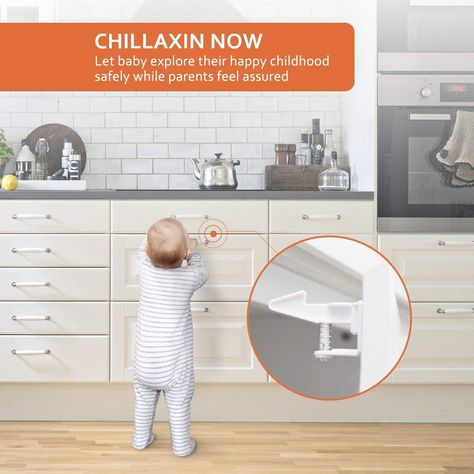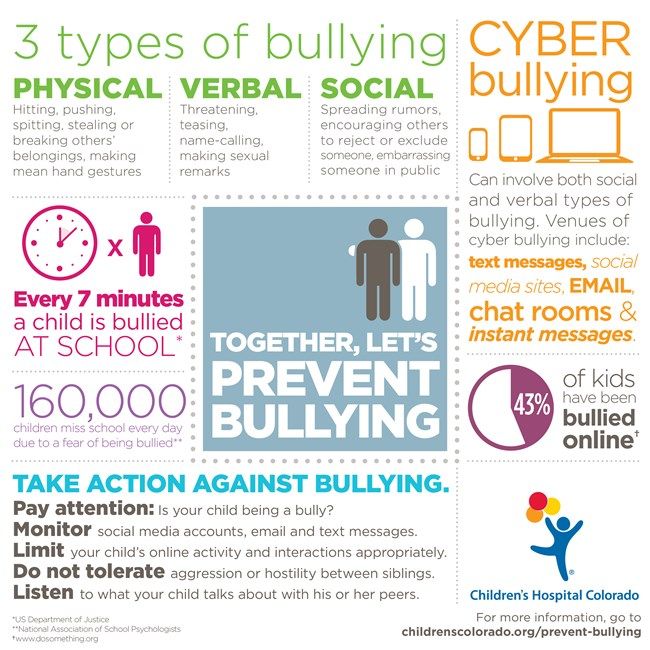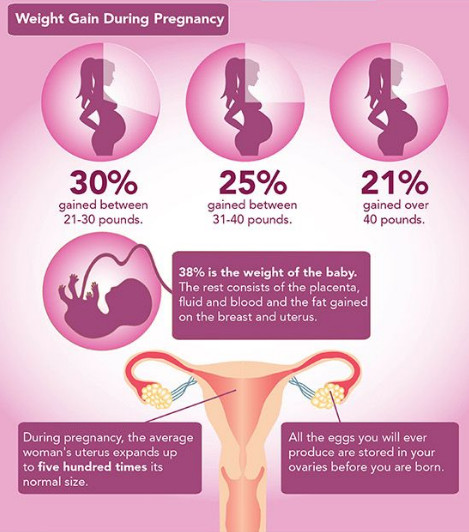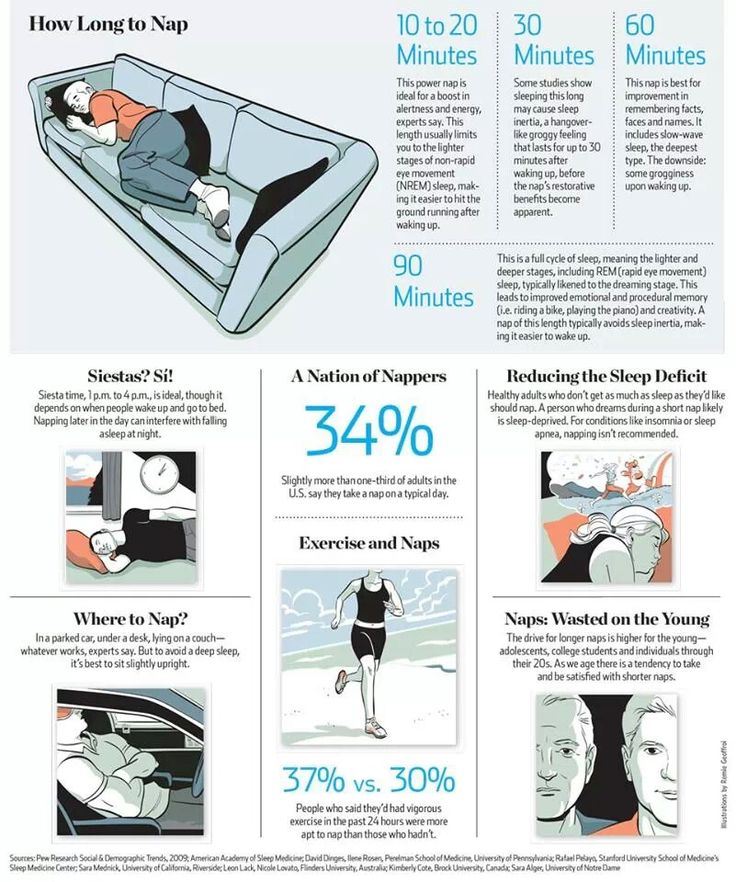How to install child safety latches on drawers
How to install safety latches on cupboards
by Debbie Chapman
This post may contain affiliate links. Read our disclosure policy.
So, ignoring the fact that my cupboards need a little TLC, let’s talk about babyproofing. A few weeks ago I posted a list of 10 often missed babyproofing tasks. Today we are going to go through how to install safety latches on cupboards – an important babyproofing task, but one that I have never done before.
In our old house, our master bathroom had a single sink with two cupboards underneath it. We just used a hook lock that connected the two handles together and it worked wonderfully. Now that our master bathroom has two sinks and a gazillion cupboards below, one single hook lock is not cutting it and I am getting REALLY tired of putting everything back in the cupboard (and I mean everything) each time we are in the bathroom.
I went to Walmart yesterday and bought these Safety 1st Wide Grip Latches for the cupboards – 14 latches for about $8. You’ll have to be really gung ho about babyproofing to use up all 14 of these guys. I prefer to stick to the essentials and install them as I need them:
Here’s a photo of what the parts look like – latches, catches, screws, and the yellow stuff is double sided adhesive.
The double sided adhesive is actually really convenient for positioning everything.
You put it on both the catch and the latch to hold them in place before screwing them in.
Position the latch so that it lines up with the catch:
And just stick it on the door where it needs to be:
The instructions suggested hammering a small nail to make starter holes for the screws. Which would have been a great idea, except 1) it’s really hard to hammer a cupboard door, even when you brace it and 2) the latch fell off because it was only held in place with double sided tape. I also hammered my finger twice (yes, twice), but I’m thinking that was more user error.
I’m thinking using a drill would have been easier? But I just used a screw driver like they suggested.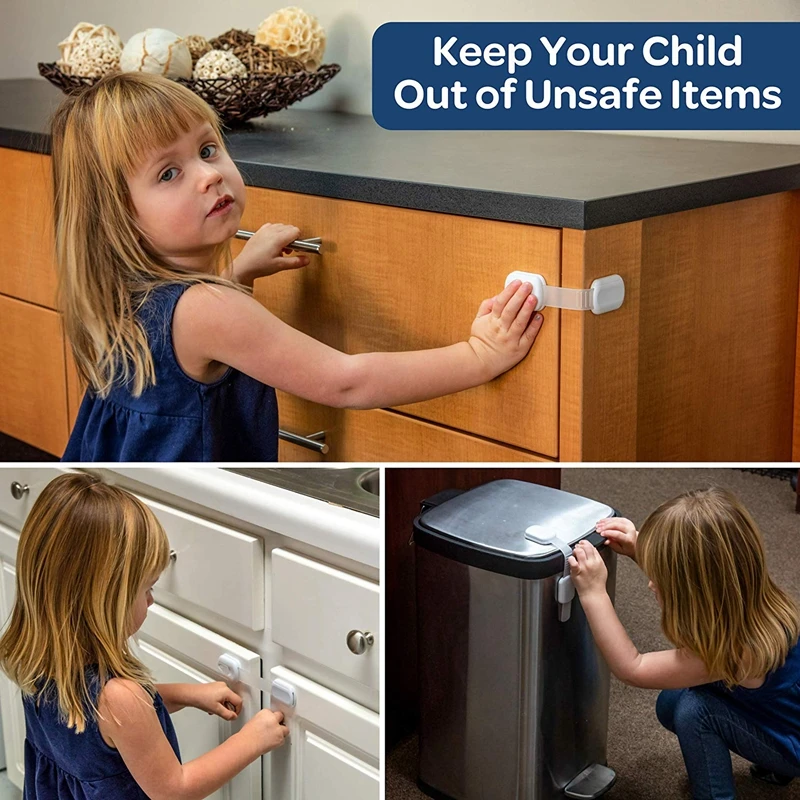 It was hard work and I made a few dings in the door, but luckily it was just the back of the door:
It was hard work and I made a few dings in the door, but luckily it was just the back of the door:
The double sided adhesive didn’t hold up well when I was screwing the catch on either. And that is a really awkward angle to screw. At this point I stabbed myself with the screw driver. It’s not that this was a difficult job, it was just really awkward.
Are you wondering what the middle hole is for and why I used the two side holes instead? I needed to adjust my latch up and down, so unless you are amazingly accurate, I recommend using the side holes and ignoring the middle hole:
And there you go, it should line up:
And babyproof by clicking in place so little hands can only open the cupboard by about 1-1/2″. Kind of annoying for adults (who am I kidding, it’s actually really annoying for adults!), but at least I won’t have to keep restocking the cupboards every time my little rascal is in there!
I’m not overly pleased that the cupboards now have permanent screw holes in them – It’s not like they will need to be babyproofed forever – but that was really the only option for this end cupboard, and at least I can rest assured that my 10 month old won’t get in there anymore!
About Debbie Chapman, the Author of this Post
I'm Debbie Chapman, founder of One Little Project and author of the book Low-Mess Crafts for Kids.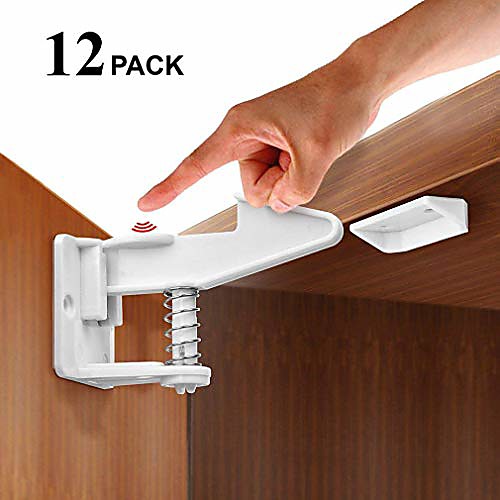 I love creating fun and easy crafts and cooking up delicious recipes for my husband and 3 kids.
I love creating fun and easy crafts and cooking up delicious recipes for my husband and 3 kids.
More by Debbie Chapman
Love to cook, bake, craft, create?
Join the e-club for the latest
- Name
First
- Email*
Get the Book
Low-Mess Crafts for Kids
72 Projects to Create Your Own Magical Worlds
Get your copy
How to Babyproof Your Cabinets and Drawers
Your home should be a haven for your children — but is it?
Whether you’re preparing for your first little one or already have a large brood to take care of, safety is always a concern. We know that ensuring your home is safe can feel daunting and even overwhelming.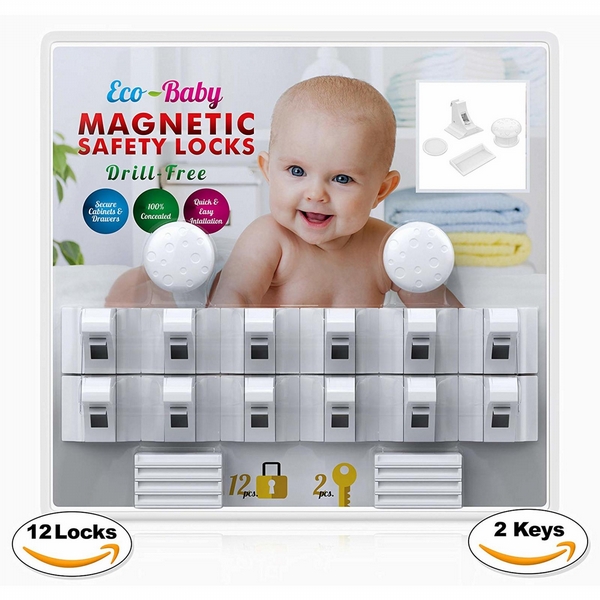
Childproofing is one of the easiest ways to minimize potential hazards — and two of the most important furnishings to childproof are cabinets and drawers.
Let’s take a closer look at some of the methods and products you can use for childproofing your cabinets and drawers.
Table of Contents
- Beginning the Childproofing Process
- How To Childproof Drawers
- How To Childproof Cabinets
- Other Childproofing Tips
- Remember That Supervision is Essential
Beginning the Childproofing Process
Where should you begin your journey to plug every electrical socket and cushion in every corner?
I discuss childproofing during the 6-month baby wellness visit. I feel this is a good time because infants haven’t become very mobile yet, and it gives the parent about two to three months to prepare the home.
Editor's Note:
Dr.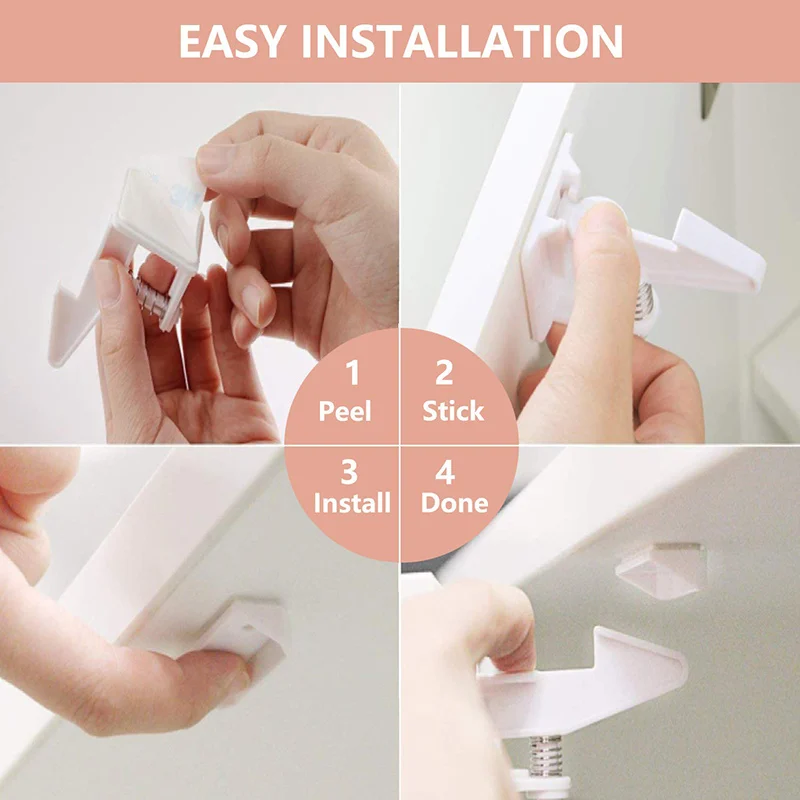 Leah Alexander, MD, FAAP
Leah Alexander, MD, FAAP
The best way to get a general start is to get down on your hands and knees and look at the world through a child’s eyes. Identify any potential hazards. Go through this process room by room.
When you’re down there, you might notice the appeal of drawer and cabinet handles — two of the most common parts of your house to childproof.
How To Childproof Drawers
At first glance, you may think the only danger of a drawer is what lies inside. However, drawers and the dressers that hold them have many risks.
Your child could potentially:
- Access dangerous objects, such as medication or knives.
- Close their fingers in the drawers.
- Use the drawers as a ladder to climb up high.
- Pull a drawer out on themselves.
- Pull a free-standing dresser on top of them.
According to Safe Kids, a nonprofit organization dedicated to preventing injuries in children, “tip-over” injuries have increased 31% in the last decade, with over 12,000 visits to the emergency room reported (1).
How can you childproof your drawers and dressers? Here are six different ideas for you to implement, including a closer look at the many different products and options available.
1. Remove dangerous objects
As great as locks and guards are, children are wild! The older they get, the weaker your childproof-security system will likely become. The best option is to get rid of dangerous objects in the first place.
With children, a dangerous object can mean almost anything, but here are some of the most common household items to remove or place out of reach:
- Cutlery.
- Any pointed or sharp objects.
- Lighters.
- Medications.
- Cleaning supplies.
- Plastic bags.
- Batteries.
- Any potential choking hazard.
- Small electrical items such as flat irons.
Take all of these objects and any others you think are hazardous, and store them high up. Don’t rely solely on drawer locks. Also, it’s crucial that you store any firearms correctly and out of reach (2).
Pro Safety Tip
Use plastic Tupperware containers to store smaller objects. Not only will it add one more step between hazardous objects and your child, but it will help keep your drawers organized.
2. Use magnetic locks
The most popular way to childproof drawers is by using a lock. In recent years, magnetic locks have emerged as an effective solution to keeping your kitchen, bedroom, and bathroom drawers securely shut.
To use, you install a latch with a strong magnet inside the drawer, which prevents it from being opened.
When you place the companion magnet near the drawer, the latch is released, and you’re able to pull the drawer open.
- Pros: Magnetic locks are strong but discreet. You can maintain the look of your drawers without sacrificing safety.
- Cons: Some magnetic locks are easier to install than others. You’ll also have to keep tabs on where your magnetic key is.
3.
 Use tension rods
Use tension rodsIf you have handles on your drawers instead of knobs, use a tension rod vertically through all the handles to secure all the drawers at once.
Tension rods are most often used as curtain rods and come in various styles and sizes. Find one that fits through your handles, and run it all the way down.
You’ll want to make sure you get a tension rod with rubber ends. Secure one end underneath the lip of the countertop so your child cannot easily pull the rod out.
- Pros: Tension rods are relatively inexpensive, and you only need one for each set of drawers. Since you don’t have to install anything, you don’t have to worry about damaging your furniture.
- Cons: Every time you want to open a single drawer, you’ll have to remove the entire rod. As children grow, they may learn how to release the tension rod.
4. Use adjustable safety locks
Do you want a single-lock system for multiple drawers around your home? We recommend an adjustable lock.
These locks have two plastic anchors on either side and a silicone or plastic strip in the middle. You attach one end to the side of the dresser or counter and the other end to the front of the drawer. Then, you pull the strip tight enough to keep the door closed.
Just click the button on the door to release the lock.
- Pros: You can use an adjustable safety lock on a wide variety of drawer sizes. They’re also easy to install and open.
- Cons: Adjustable locks, while able to secure the drawer, often leave a gap your little one can squeeze their fingers into. They may also be more challenging to place on the drawers in your kitchen.
5. Use latch locks
Latch locks are a classic.
Latch locks attach near the top of the drawer you are childproofing. They hook securely to the top of a special piece of plastic you attach above the drawer.
When the latch catches, you cannot pull the drawers open.
- Pros: Latch locks are widely available in a variety of styles. They were designed specifically for drawers, so you know they’ll work.
- Cons: Latch locks often require that you drill into your cabinets, and they take some time to install. If you opt for latch locks, make sure to give yourself some time to install them.
6. Use furniture anchors
There’s a reason we refer to a dresser as a “chest of drawers.” While you may want to focus on the kitchen, you also need to secure free-standing furniture.
If your baby pulls out the drawers, they can use them to climb up. The added weight increases the risk of the furniture tipping over, causing serious injury.
Use furniture anchors, also called anti-tip straps, to secure dressers, dressing tables, or shelves.
Secure the straps to the wall and the piece of furniture. If the furniture begins to tip over, the straps will prevent it from falling.
How To Childproof Cabinets
Cabinets and cupboards can be scary places when you have children. They’re the gateways to large areas full of fascinating things for your child to get in trouble with.
People often use cabinets to house hazardous products.
Your child could potentially do any of the following:
- Ingest poisonous liquids or products, such as cleaning liquids or medications.
- Hurt themselves with heavy objects, such as pots and pans.
- Slam their fingers and toes in the doorway.
- Get trapped in larger crawl spaces.
Just as with drawers, there are many different ways to childproof your cabinets.
1. Remove dangerous objects
Here are a few objects you may need to remove from your cabinets:
- Cleaning liquids and powders.

- Medications.
- Appliances with long cords.
- Plastic bags.
- Fragile dishes.
Because of brightly colored laundry detergent pods, there have been more cases of accidental detergent ingestion (3).
Editor's Note:
Dr. Leah Alexander, MD, FAAP
You also want to pay attention to non-dangerous products with the potential for trouble.
These include:
- Bags of flour or sugar.
- Food boxes that your child can easily open.
- Aluminum foil and plastic wrap.
If you do not have other storage options, there are ways you can make your cabinets more secure.
2. Use sliding locks
Many of the locks we’ve already mentioned for drawers can be used on cabinets, including the magnetic lock systems. However, sliding locks were designed primarily with cabinets in mind.
A sliding lock goes around two different cabinet knobs or handles. It’s a U-shaped device, similar to a large bike lock. Every model is different, but you generally press on the lock apparatus to pull it off the larger mechanism, freeing you to open the cabinet doors.
It’s a U-shaped device, similar to a large bike lock. Every model is different, but you generally press on the lock apparatus to pull it off the larger mechanism, freeing you to open the cabinet doors.
- Pros: Sliding locks are inexpensive and easy to use. Since cabinets generally have two different doors, sliding locks ensure you secure both without needing extra equipment or materials. Unlike other cabinet-specific locks, they don’t feature any cords that could harm your baby or toddler.
- Cons: Sliding locks often leave gaps for little fingers. And older children can figure out the system pretty quickly, so you might have to upgrade to another method once they reach a certain age. Also, some cabinets don’t have handles or knobs, which means you’ll need to use a different system.
3.
 Use Velcro
Use VelcroVelcro is an excellent option for parents who don’t need or want an intense lock system for their cabinets.
This ingenious trick starts with Velcro strips, with an adhesive material on one side and Velcro on the other. Open each cabinet door and place the two strips on the inside frame, one on the top and one on the bottom. Then add two more Velcro strips on the inside of the door opposite the others.
The Velcro will lock together, preventing small hands and arms from pulling the door open.
- Pros: With Velcro, you don’t have to worry about drilling holes into your cabinets. You can even find Velcro with adhesives you can remove easily.
- Cons: While you can find Velcro of varying strengths, your door will still open if a child uses enough force. Velcro is a good option for babies and toddlers but may prove ineffective as your child’s arms get stronger.
Sticky Tip
Look for the amount of weight the Velcro is said to hold.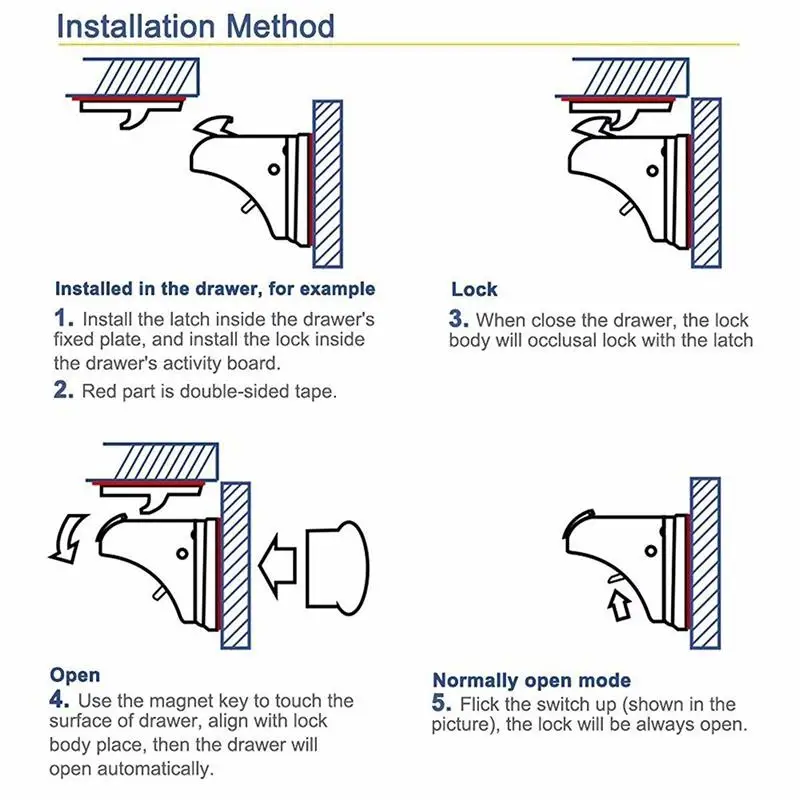 The higher the number, the harder it will be to open the door.
The higher the number, the harder it will be to open the door.
4. Use pull cord locks
Pull cord locks are suitable for cabinets with round knobs placed side-by-side. They’re pretty simple — think of a backpack you pull closed with a cord.
To install, place the cord around both knobs. Then, press on one of the attachments and slide it all the way up so the cabinet is secure. You’ll be left with a single, long piece of the cord. To release, press the button and slide it down again to widen the circle.
- Pros: Unlike some other do-it-yourself methods to wrap cords around both knobs, you cannot undo pull cord locks. They won’t loosen, so you don’t have to worry about your child prying them off.
- Cons: You should always be wary whenever cords or long strings are available to your child, as they pose a potential choking hazard.
 Make sure you get a high-quality cord lock that works properly and doesn’t leave too long a strand when locked.
Make sure you get a high-quality cord lock that works properly and doesn’t leave too long a strand when locked.
5. Create foam bumpers
Children can have way too much fun slamming cabinet doors! This is dangerous because no one wants those little fingers bruised or broken from a slammed door. If you have a cabinet you don’t need to lock, but you don’t want your child to slam it, create your own foam bumper.
You can do this easily with a hollow pool noodle. Simply cut off a section of a pool noodle and slit one side. Then, wrap the slit around the door, high up where your child can’t reach it.
6. Cover knobs
Are the knobs on your cabinet especially large? Prevent bruises and goose eggs on your child’s forehead by covering up the knob with something soft. Tennis balls split on one end are great, as are crocheted covers or soft fabrics attached with a rubber band.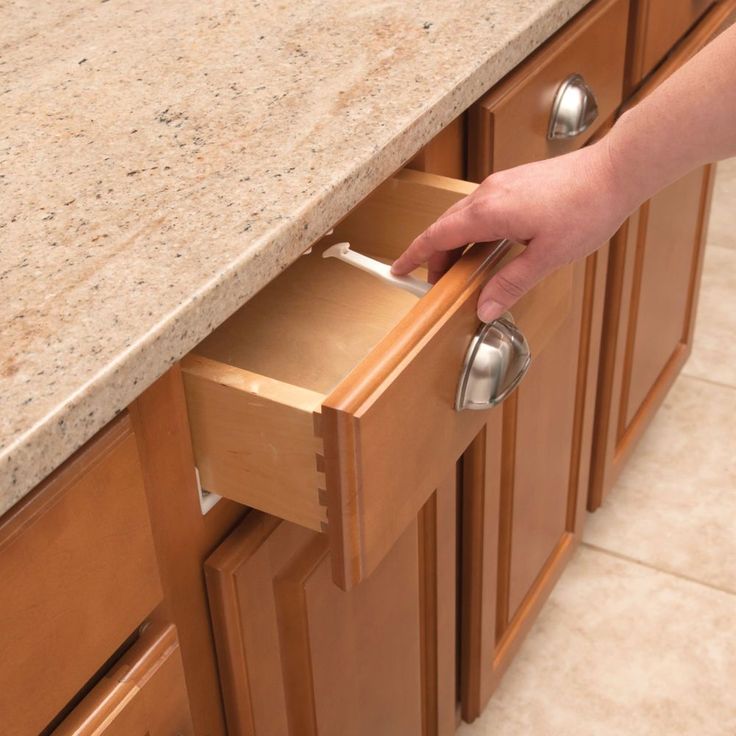
- Pros: You get to prevent some problematic bumps from a tipsy-topsy toddler. You can also use the covers on doorknobs you don’t want to turn.
- Cons: Knob covers are not always the most attractive — a major décor faux pas!
Other Childproofing Tips
Now that you’re armed with some essential knowledge on childproofing your cabinets and drawers, it’s time to take your skills to the next level.
- Keep an eye out: If you’re worried about your child figuring out how to open drawers and cabinets, try to avoid opening them where your child can see. Kids copy everything you do!
- Use fun distractions: Include something fun and safe in an area with locks, like a basket of colorful kitchen towels. By giving them something to do, your child may be less likely to turn their attention to breaking past your security systems.
- Talk to them: As your child grows older, make sure to discuss why certain things are off-limits.
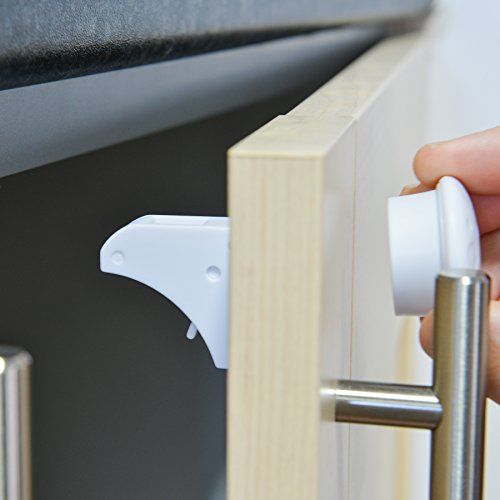 It’s an excellent opportunity to discuss boundaries and how they can take control of their own safety.
It’s an excellent opportunity to discuss boundaries and how they can take control of their own safety.
Remember That Supervision is Essential
Nothing can replace a watchful eye. Always supervise your children in places with potential hazards.
As you watch your child, you’ll be able to prevent them from getting into places they shouldn’t be and understand their mindset a little bit better.
If things are especially hectic, we suggest you use baby gates and barriers to prevent your child from accessing areas you don’t want them to go.
Feedback: Was This Article Helpful?
Thank You For Your Feedback!
Thank You For Your Feedback!
What Did You Like?
What Went Wrong?
Child locks for drawers and cupboards: protecting children from danger
Not long ago your little child was born, and now he is actively exploring every corner of the apartment.
Locking device prevents hanging drawers from opening completely.
This is where it becomes necessary to think about the safety of the little researcher from unwanted objects and sharp corners, doors and drawers, to which the young know-it-all attracts like a magnet.
Drawer and cupboard door guards prevent children from opening them unintentionally. nine0003
Fortunately, the modern market is rich in all kinds of devices that can completely protect the child from possible injuries and dangers that await him in the house.
To protect the contents of the drawers from the baby, you need to use a lock on the drawers.
Parents, on the other hand, such little things will give more peace of mind, and will also help get rid of the extra work associated with putting things back into lockers that have been ruined by the baby.
Prevents drawers and refrigerators from opening. nine0003
As soon as the baby begins to stand up or actively crawl around the house, parents have to think about the possible dangers that lurk within the walls of the apartment.
Prevents drawers from opening and the child from bruising.
Wardrobes and drawers with potentially dangerous items attract a small child, and the doors themselves can injure a baby by pressing his fingers.
Prevents drawers from opening and the child from bruising.
To exclude the possibility for the baby to open the lockers, there are child locks on furniture that are not amenable to children's hands.
Prevents unplanned opening of lockers and appliances.
These locks are inexpensive, so their purchase is very reasonable.
Locking device prevents hanging drawers from opening completely.
The type of lock directly depends on the nature of the furniture to be locked and how it is opened. Indeed, in order to protect the drawer from the little robber, a completely different device is needed than for a cabinet with doors. nine0003
Universal safety tape with Velcro to prevent your child from opening the refrigerator, toilet seat, desk drawers, etc.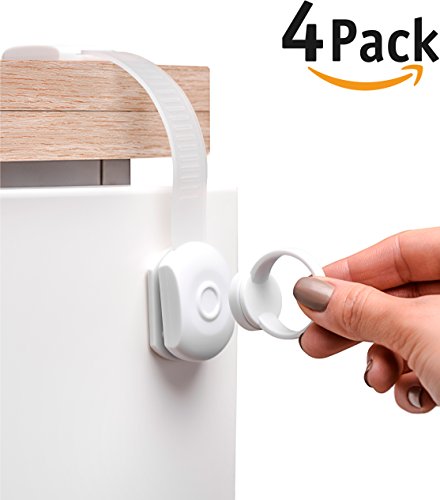
Contents
- 1 How to protect your children from dangerous furniture
- 2 Drawer locks
- 3 Wardrobe guards
- 4 - ideas for locks and child locks for drawers and cabinets
How you can protect your children from dangerous furniture
- Standard type locks are an effective way to protect furniture, but they require installation of a device that sacrifices appearance.
Locking device prevents hanging drawers from opening completely.
- State-of-the-art security locks and latches leave no traces behind, attach quickly and securely, and can be installed by any adult. Opening and closing them is not difficult, but the child can not do it. nine0042
Prevents unplanned opening of lockers and appliances. Attaches with suction cups.
- Special handles with built-in locks and locks. To use them, it is enough to put them in place of the old pens. And then you can change them back.
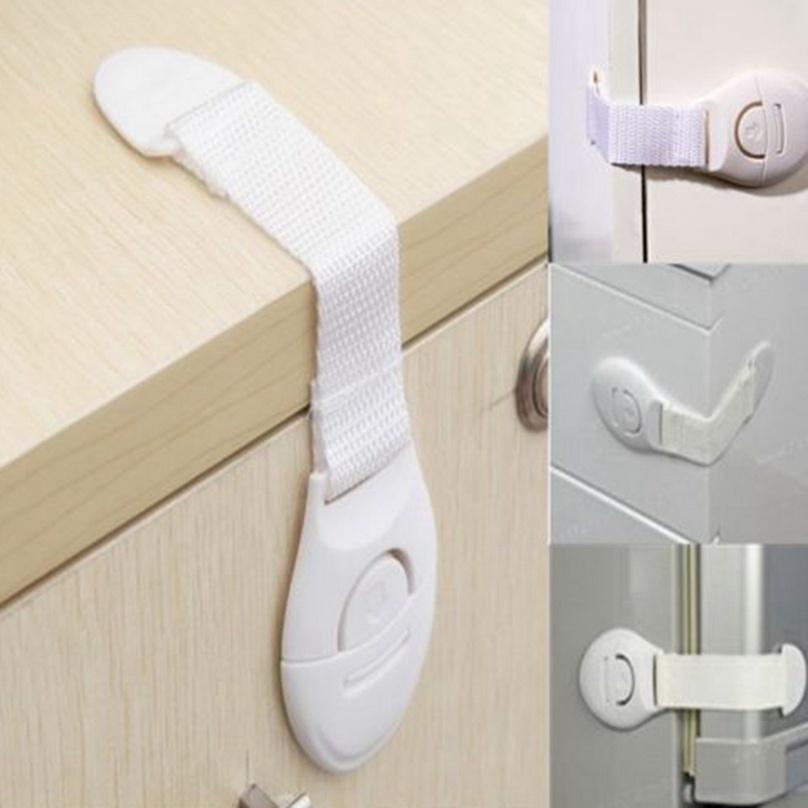 Such devices are good because you do not have to make separate holes in the furniture. At the same time, they are the most convenient in everyday life, do not require additional complex manipulations when opening and closing cabinets, and do not risk being unhooked or lost during operation. nine0042
Such devices are good because you do not have to make separate holes in the furniture. At the same time, they are the most convenient in everyday life, do not require additional complex manipulations when opening and closing cabinets, and do not risk being unhooked or lost during operation. nine0042
Prevents the doors from being opened and thus protects the child from objects that may fall out of the cupboard and prevents them from being pinched.
- Of course, if there is no way to purchase special devices, people have to make do with materials at hand. Cabinet handles are tied with ropes or rubber bands. Retractable drawers are fixed with adhesive tape or Velcro. A cabinet with a sliding door can be “wedged” with a wheel that helps it open and close. However, with such methods, a lot of inconvenience arises: the ropes have to be untied every time, the adhesive tape fixes the doors unreliably, and it is difficult to wash it off the furniture. Such methods eventually begin to succumb to children's hands and turn out to be useless.
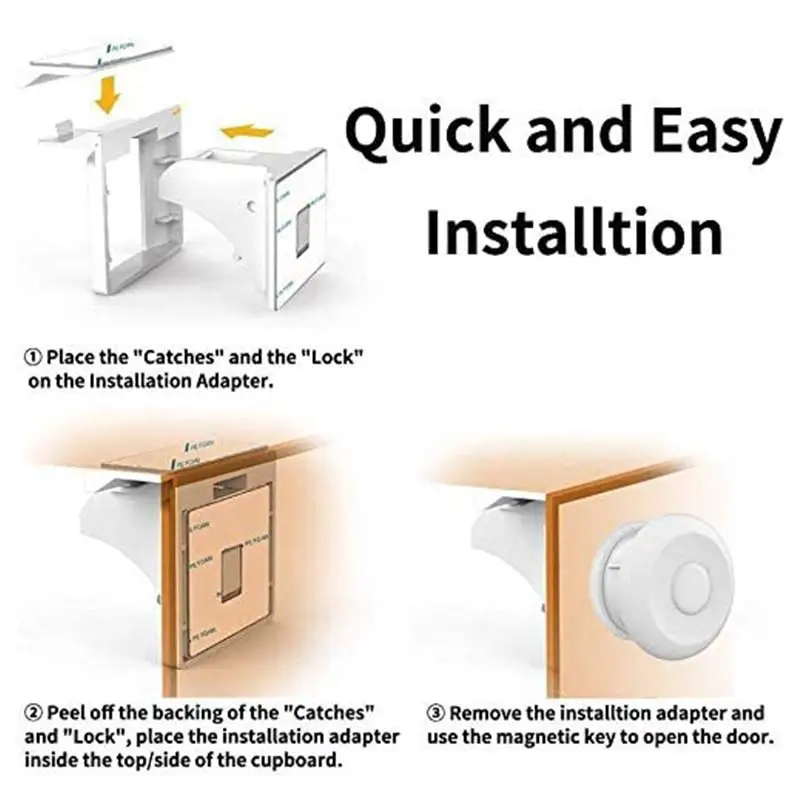 For especially active children, they do not turn out to be a problem at all. Often, the parents of such a baby have to move all the cabinets and chests of drawers in the house facing each other or against the wall. Imagine how problematic it is for adults to take anything from there. nine0042
For especially active children, they do not turn out to be a problem at all. Often, the parents of such a baby have to move all the cabinets and chests of drawers in the house facing each other or against the wall. Imagine how problematic it is for adults to take anything from there. nine0042
Prevents the doors from being opened and thus protects the child from objects that could fall out of the cupboard.
Drawer Blocks
The most common and cheapest options are sold in the children's section of stores. They are quite easy to use, made of plastic and fixed to furniture with special Velcro.
The lock is a versatile security lock suitable for a full range of kitchen appliances, cabinets and drawers. nine0003
Peeling off them is quite easy, they will not leave marks on the furniture. The mechanism is based on two elements. One element is attached to the edge of the box, and the other - to the wall.
When closing, it is necessary to click the lock, securing both parts.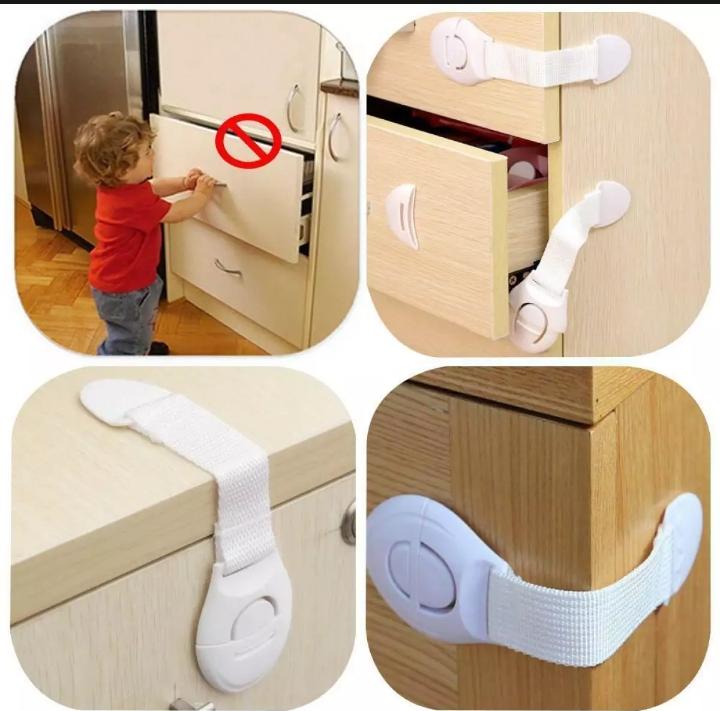 To open, you need to press the latch from both sides at once.
To open, you need to press the latch from both sides at once.
You can prevent your child from opening the cabinet door.
Depending on the model of the fastening, there can be different types of opening: using a hidden button, eye hooks or a special key. nine0003
With this security accessory you can restrict access to cabinets.
Locking handles are more convenient and reliable to use, but they are more expensive and more difficult to install.
Limits access and reliably protects your fidget from possible injuries and bruises.
Wardrobe guard
The sliding door of wardrobes is usually equipped with a large floor mirror that attracts small children. They tend to touch it, the door, and when opening it, examine its contents. nine0003
Limits access and reliably protects your fidget from possible injuries and bruises.
At the same time, things are constantly being scattered from the lower shelves, and it becomes impossible to put equipment or potentially dangerous things.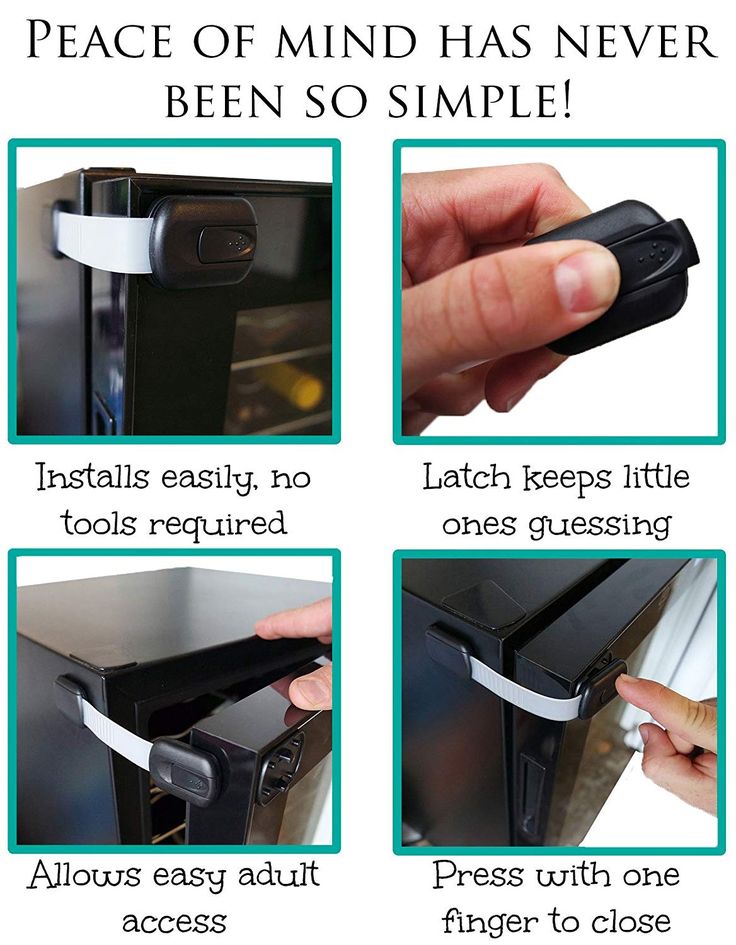 And the door threatens the little researcher with a pinched finger.
And the door threatens the little researcher with a pinched finger.
The blocking is made of harmless material, free of phthalates.
For a sliding door, you cannot use the lock installed on classic doors, but you can use a multi-purpose latch or purchase a special lock for this type of furniture .
Prevents unplanned opening.
Multi-purpose latches consist of three parts connected with a special cable. One element is glued to the cabinet door. To close the device, you need to insert the protection into the part located on the case.
Blocks and prevents unwanted opening by a child.
The device is opened using the hidden button. It does not need to be glued to the walls, as this retainer is installed on the handle. Locking occurs automatically when the door is fully closed. nine0003
Suitable for cupboards, refrigerators, washing machines, microwave ovens.
It is clear to every parent that child locks on furniture are not superfluous suspiciousness, but ways to protect your baby from real danger.
Guard blocks cabinet doors from opening.
Their use will help not only to protect the child from possible injuries, but also free parents to constantly clean things scattered around the room from lockers. Moreover, taking care of the safety of children today is not at all difficult and does not require a lot of money or effort to install. nine0003
A magnetic lock that attaches to the outside of your furniture so that a child can no longer open those drawers and doors.
VIDEO: Child safety at home (blockers, latches, etc.)
50 photo-ideas of locks and child locks for drawers and cabinets
Previous
What size mattress should be?
Next
OtherBed cover as bedroom decoration
Child protection for drawers and cabinets (17 photos) - locks, blockers, latches
In the modern world, you can protect your child without resorting to damage to furniture by cutting into it various locks and hecks. Today, there are many different devices that are attached to furniture and do not allow the child to open drawers and doors. They will be especially appreciated by parents who want to organize a children's corner in their room.
Today, there are many different devices that are attached to furniture and do not allow the child to open drawers and doors. They will be especially appreciated by parents who want to organize a children's corner in their room.
Based on what kind of furniture is in the apartment and how the child tries to open it, the choice of protecting the furniture from the baby depends. But it is important to remember that protection on wardrobes will not work on swing wardrobes, and vice versa. nine0003
Here are some types of protection for furniture:
- Mortise locks or overhead locks can be installed. They are reliable, but their disadvantage is that for installation you need to drill several holes in a dresser or cabinet. Not everyone wants to ruin their furniture.
- There are also modern locks for doors and drawers. An adult can easily open them, but for a small child this is an almost impossible task. There are many types of such locks. nine0041 Another sparing option: installing new handles on furniture - with built-in locks.
- And, of course, do not forget about the possibility of protection with old folk remedies - a rope passed through the cabinet handles, or adhesive tape pasted on the boxes. However, it should be remembered that such methods are far from the most reliable. But if it is not possible to use any of the above remedies, then these will do.
 New openings on the facades will not be needed.
New openings on the facades will not be needed. Drawer locks
The most popular method of protection is special latches, one part of which is attached to the furniture frame with a special Velcro, and the other half to the drawer front. Such protective devices can be bought in specialized children's stores. They are inexpensive, and it does not take much time to install them. When the need for such latches passes, they can be easily removed, and there will be no trace of them on the furniture.
There are many varieties of such latches, but their essence is that each such lock has a main element that is fixed and remains motionless, and a counterpart that just works like a lock.
nine0003
It is possible to install handles on furniture or, for example, on windows with a special built-in lock. But this method is a bit more complicated than the one described above, since you will need to find handles that would fit in place of the handles installed on the furniture. After you bought such a handle, it is installed on the box, and it simply closes with a lock.
Closing the wardrobe from the child
Hinged wardrobe doors are also better protected from the baby. Otherwise, leaving him alone for a minute, you run the risk, returning to the room, to find a pile of linen from the lower shelves and your little one, merrily frolicking with him. As a rule, U-shaped latches are installed on swing doors.
This is the easiest way to protect as it does not require drilling holes in the furniture or even gluing the protection to the surface of the furniture.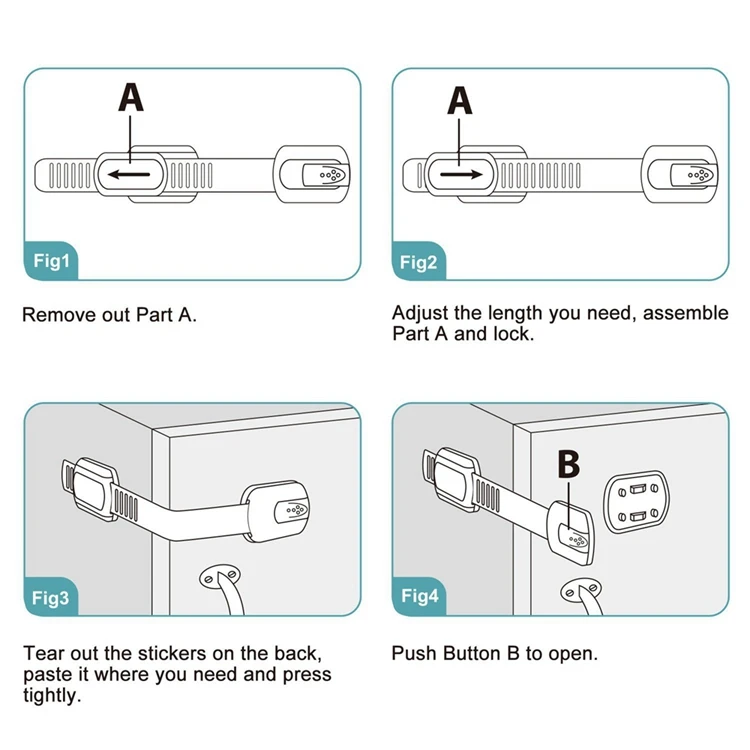
Plastic hook latches can also be used. They consist of two parts: the first part is attached to one cabinet door, and the other - the hook itself - is installed on the other door. When the doors are closed, the cabinet is locked with a hook. nine0003
The closet door can also be locked. The mirror on the closet is a very attractive item for the baby. Usually, small children enthusiastically roll cabinet doors, look at their reflection in the mirror, and drag all things from the lower shelves to the floor.
Of course, fittings that are installed on hinged wardrobes are not suitable for a wardrobe. But still, there is protection for such furniture today. The most popular type of wardrobe protection is the Butterfly latch. It is installed on one of the doors, next to the second door. When the "wings" are lowered, the cabinet door is in a movable state. By pressing a special button, the "butterfly wings" rise and do not allow the cabinet door to roll. nine0003
Sharp corner protector
Sharp furniture edges are no less dangerous for children.